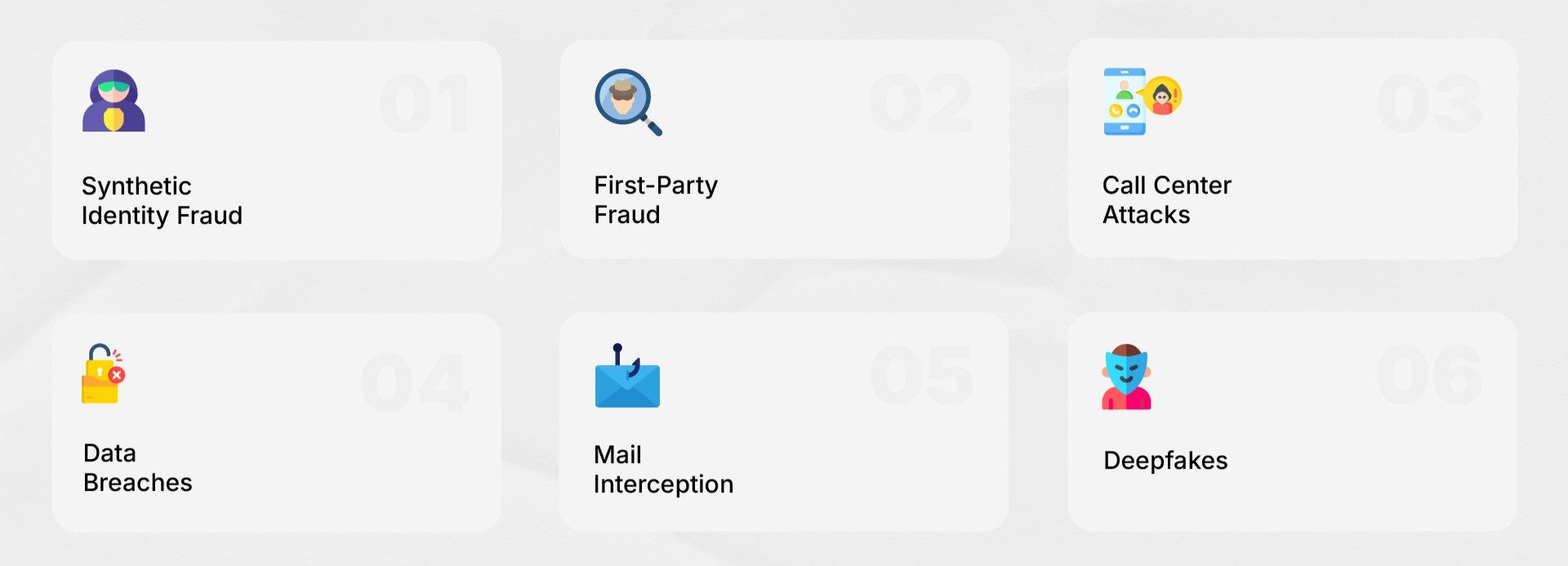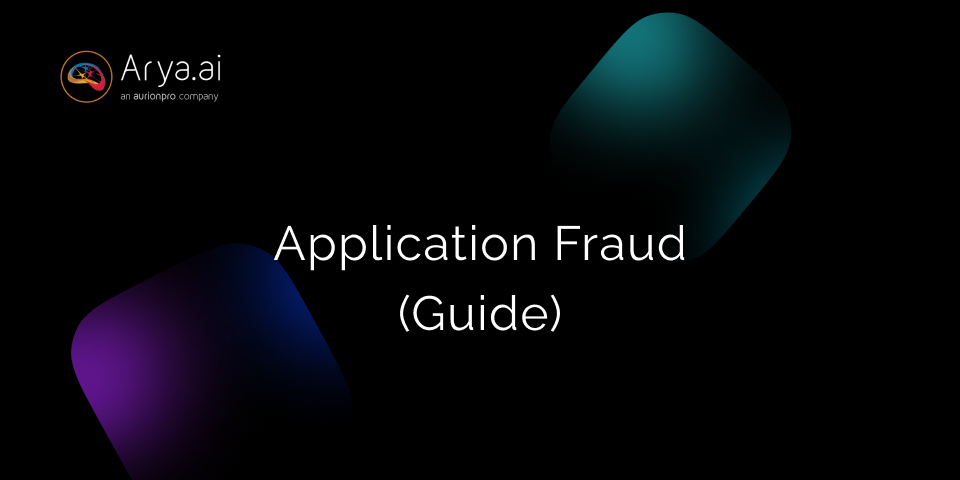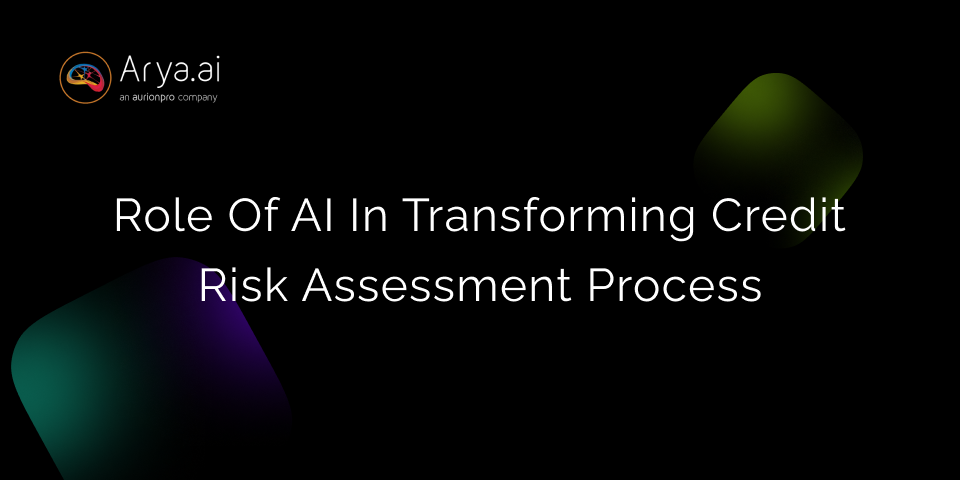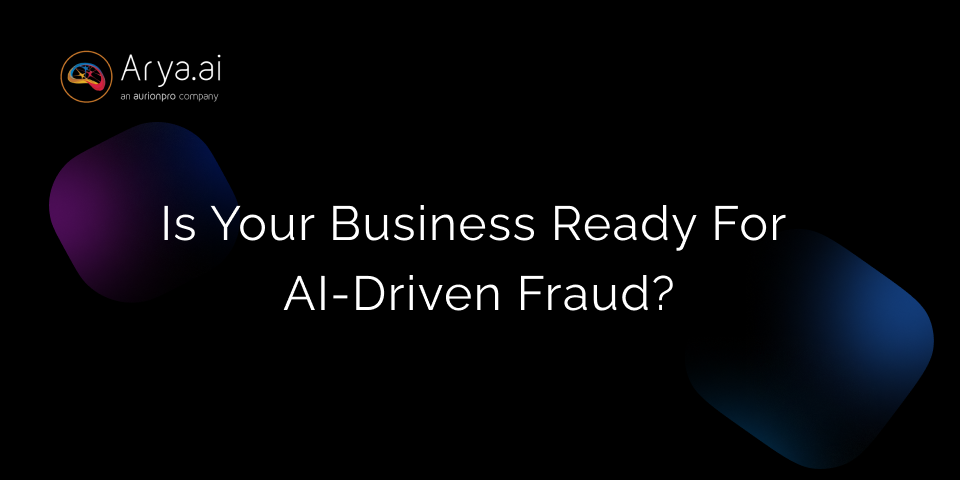TL;DR:
- Application fraud involves providing false or manipulated information during applications to gain unauthorized access to services, often through identity theft, synthetic identities, or falsified details.
- This leads to financial losses, reputational damage, and regulatory penalties, making robust fraud prevention crucial for compliance and customer trust.
- Standard methods include synthetic identity fraud, deepfakes, data breaches, mail interception, and call center attacks, exploiting digital vulnerabilities.
- Tools like AI-powered onboarding, real-time identity verification, behavioral analytics, and multi-layer authentication help effectively identify and mitigate fraud risks.
Application fraud has plagued the financial world for a long time, long before banking, insurance, and lending ecosystems moved to digital platforms. With digitization came a new wave of fraud tactics, expanding the avenues for identity theft, false claims, and misuse of customer data.
Increased accessibility to AI has only amplified these risks. Fraudsters can now use AI-driven technologies to automate and scale their attacks, crafting realistic-looking fake IDs, synthetic identities, and even deepfakes to bypass traditional verification systems. Only Fake AI quickly became notorious for generative AI-generated fake IDs.
As institutions strive to make the onboarding process seamless, they’re caught in a delicate balancing act: reducing customer friction while warding off sophisticated fraud attempts.
What is Application Fraud?
Application fraud refers to providing false or manipulated information during an application process to gain unauthorized access to goods, services, or financial resources. This type of fraud is especially prevalent in sectors that depend on digital applications for account creation, lending, or credit approval. It can range from identity theft (using someone else's identity) to first-party fraud (misrepresenting one’s own details) or synthetic identity fraud (creating a false identity using real and fake details).
The risks associated with application fraud are enormous. Fraudsters gain access to credit lines or loans they aren’t eligible for, taking advantage of financial institutions and leading to significant losses and operational disruption. For banks, insurers, and lenders, detecting application fraud is not only about loss prevention but also about maintaining customer trust and regulatory compliance.
Why Must Financial Institutions Detect Application Fraud?
The digitization of financial services has improved accessibility but has also opened new vulnerabilities. The potential impacts of unchecked application fraud are far-reaching:
- Financial Losses: Misrepresentation on applications can lead to fraudulent credit lines, loans, or accounts that eventually result in non-repayment or charge-offs.
- Reputational Damage: For financial institutions, a reputation for weak fraud detection can diminish customer trust, resulting in customer attrition and regulatory scrutiny.
- Regulatory Compliance: Failure to prevent application fraud can lead to significant penalties, especially as anti-money laundering (AML) and Know Your Customer (KYC) requirements become stricter globally.
Ways Application Fraud is Committed

Fraudsters employ a variety of tactics to exploit digital application processes. Here are some of the most common types of application fraud tactics used:
Synthetic Identity Fraud
One of the most prevalent types of fraud today, synthetic identity fraud, involves blending real and fabricated information to create a new, credible identity. For instance, a criminal may use a legitimate identity number (often stolen) and combine it with fake personal details, such as a fabricated address or name.
First-Party Fraud
In first-party fraud, the individual applying for a product or service uses their actual identity but supplies falsified information. Common examples include inflated income, fake employment records, or doctored bank statements to secure loans or credit they wouldn’t otherwise qualify for.
Deepfakes
A growing concern for financial institutions, deepfakes are AI-generated videos, images, or audio that can imitate real people with startling accuracy. Fraudsters use deepfakes to spoof identity verification processes, especially in scenarios requiring facial recognition.

Data Breaches
Hackers target financial databases to obtain sensitive information that can be resold or used directly for fraudulent applications. Once criminals gain access, they use personal information to create authentic-looking applications.
Call Center Attacks
Contact centers are a target for social engineering attacks where fraudsters manipulate agents to disclose or change account information, enabling them to commit application fraud. Due to the reliance on voice verification, call centers are vulnerable to identity spoofing tactics, contributing to a rise in contact center fraud.
Mail Interception
In certain cases, criminals intercept mail deliveries to gather physical identification documents, a common tactic in credit card application fraud. By stealing identities, they apply for financial products and use USPS’s Informed Delivery to intercept the mailed credit card before it reaches the intended recipient.
Application Fraud Detection Techniques

Financial institutions have access to a range of technologies and practices to combat fraud and enhance their application verification processes. Here are several effective ways for application fraud prevention and detection.
AI-Powered Onboarding
Incorporating AI-powered onboarding in the application process enables financial institutions to verify identities, validate documentation, and identify anomalies efficiently. AI can detect patterns and flag suspicious applications for further review, optimizing fraud detection while minimizing the need for manual intervention.
Real-Time Identity Verification
Modern fraud detection tools use real-time identity verification to match applicant data against government-issued IDs and other databases. Solutions incorporating facial recognition and liveness checks ensure the applicant is indeed who they claim to be.
Multi-Layer Authentication
Multi-factor authentication (MFA) and additional verification layers, such as biometric scanning, help add robust security to the onboarding process. Layered security protects against identity theft and builds resilience against increasingly sophisticated AI-driven attacks.
Behavioral Analytics
Monitoring user behavior during the application process can help identify fraud. For example, rapid form fills or inconsistent data entries may indicate the use of bots. Behavioral analysis allows institutions to monitor and flag applications with atypical or suspicious patterns.
How Arya AI Can Help
Arya AI offers a comprehensive suite of Intelligent Onboarding Solutions to help businesses streamline identity verification and fortify fraud detection processes.
Our AI APIs include tools to identify manipulated media, verify identities in real time, validate the authenticity of digital signatures, and analyze financial records for inconsistencies. By automating key processes, these solutions improve accuracy, ensure compliance, and safeguard against fraudulent activities, all while integrating seamlessly into existing workflows.
Conclusion
Application fraud is an ever-evolving threat, especially as technology advances. Detecting and preventing application fraud is crucial to maintaining financial integrity, protecting assets, and building customer trust. The risks, ranging from financial losses and reputational damage to regulatory non-compliance, make it essential for organizations to adopt advanced fraud detection and prevention measures.
Leveraging solutions like AI-powered onboarding, real-time identity verification, and behavioral analytics can help institutions stay ahead of fraudsters while maintaining seamless and secure customer experiences.






